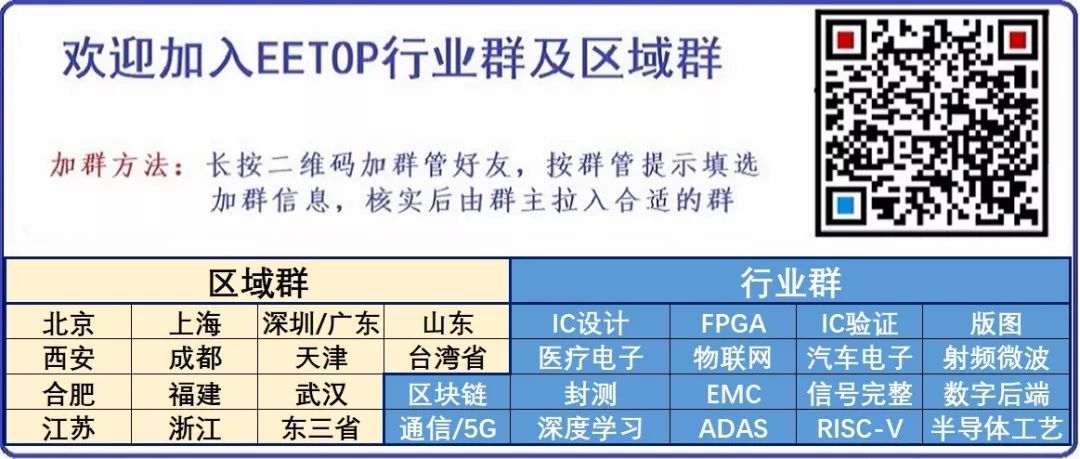
Source: Fast Technology
For a long time, the server data center market has been dominated by the x86 CPU architecture. In recent years, the ARM architecture has been making strides into the server field. Although it has not been completely successful, the giants have never given up. At the Taipei Computer Show, Marvell (Marvell Technology Group) detailed the second generation ARM-based server processor “ThunderX2 CN99XX”, claiming that various performance metrics can rival or even surpass Intel Xeon and AMD EPYC.
Founded in 1995, Marvell is headquartered in Santa Clara, California, with R&D centers in the United States, Israel, India, Germany, and China, employing over 5,000 people and holding more than 10,000 global patents. In the 2019 fiscal year, it generated $2.9 billion in revenue and is one of the most respected semiconductor companies, covering core businesses in storage, networking, and computing, particularly with over 15 years of experience in developing high-performance multi-core CPUs, having shipped billions of units, and has been working on ARM server processors for several generations.
In 2017, Marvell acquired the U.S. fabless semiconductor company Cavium for about $6 billion, thereby obtaining its ARM/MIPS product line, including the ThunderX2.
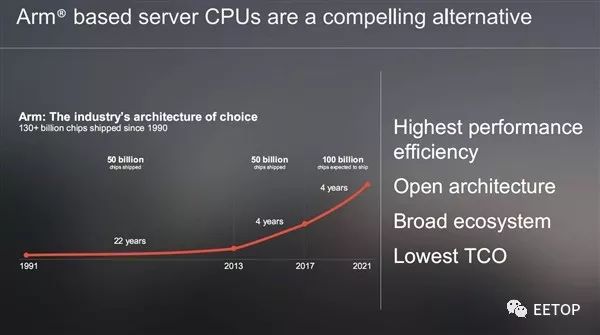
ARM architecture processors have unique advantages such as high energy efficiency, low cost, open architecture, and a broad ecosystem. Since 1990, over 13 billion units have been shipped, and the pace is accelerating. It took 22 years to ship 50 billion units from 1991 to 2013, but only 4 years to ship another 50 billion from 2013 to 2017. It is expected to ship another 100 billion units from 2017 to 2021.
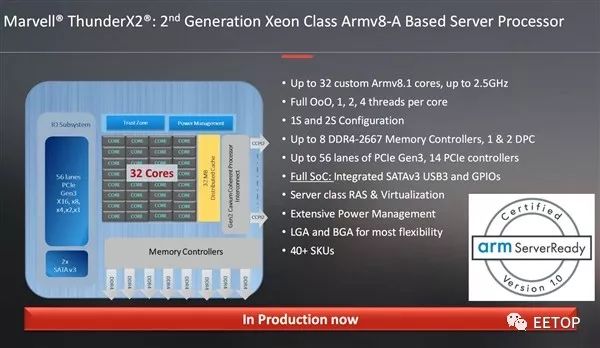
It is manufactured using TSMC’s 16nm process, with options for BGA integrated packaging and LGA standalone packaging, based on a fully customized out-of-order execution core with 64-bit ARMv8.1 architecture, supporting up to 32 physical cores, 128 logical cores (4 threads per core), with a frequency of 2.5GHz in normal mode and up to 3.0GHz in boost mode, each core having 32KB data and instruction cache, 256KB L2 cache, and a shared 32MB L3 cache.
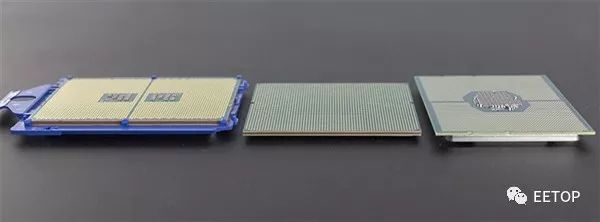
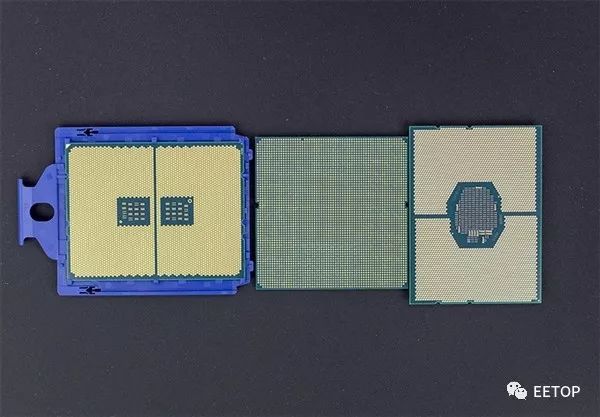
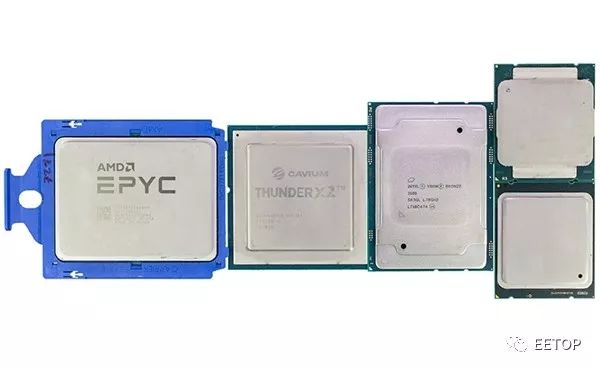
Technically, it supports ARM virtualization extensions, RAS features, and ARM TrustZone security protection. In terms of expansion, it can provide up to 56 PCIe 3.0 lanes (14 controllers), two SATA 6Gbps, and two USB 3.0.
It supports dual-socket parallelism, interconnected by the CCPI2 coherent bus, with a bandwidth of up to 600Gbps, achieving cache coherence across processors.
In terms of memory, each socket supports up to eight DDR4 channels, with a maximum frequency of 2666MHz and a maximum capacity of 4TB for dual-socket configurations.
ThunderX2 will offer over 40 different configurations, but specific power consumption has not yet been disclosed.
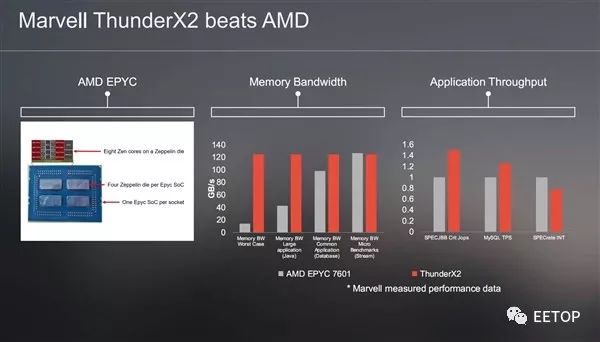
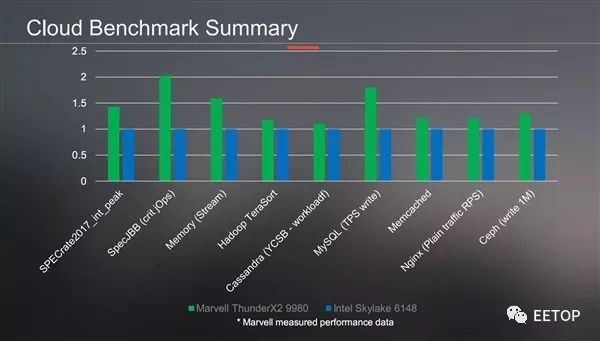
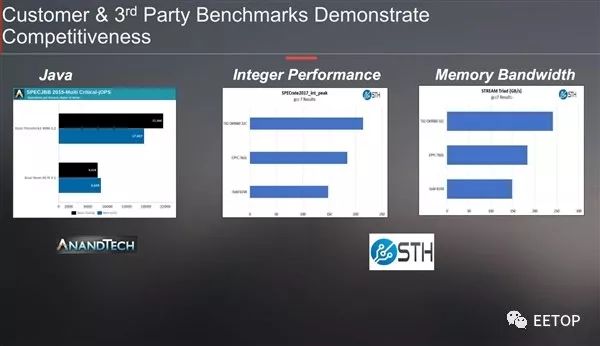
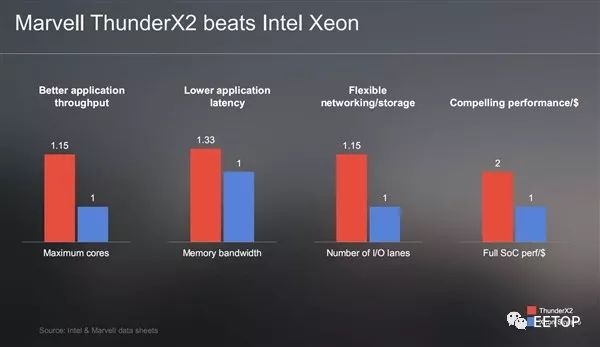
Marvell emphasizes that ThunderX2 outperforms Intel Xeon in terms of core count, memory bandwidth, I/O channels, and cost-performance ratio, while it far exceeds AMD EPYC in memory bandwidth and application throughput. In several cloud benchmark tests, its performance can exceed Intel Xeon Gold 6148 with 20 cores and 40 threads by 10-100%.
The official also provided some test results from authoritative media, showing impressive performance in Java, integer performance, and memory bandwidth.
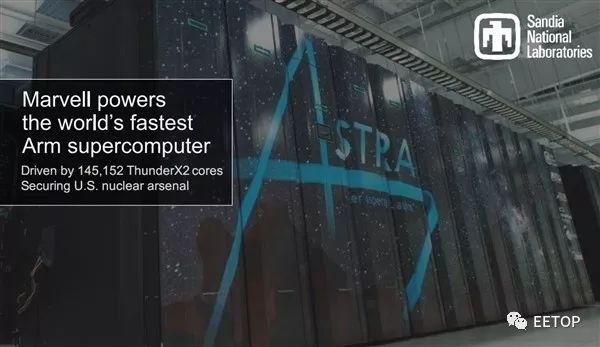
Marvell states that ThunderX2 can be applied in high-performance computing, cloud computing, edge computing, and many other fields, meeting the highest requirements for computing, storage, and networking workloads, and accelerating the adoption and deployment of ARM servers in mainstream cloud and high-performance computing data centers by providing higher levels of computing performance and ecosystem.
Additionally, ThunderX2 has already seen numerous application instances, such as the supercomputer “Stra” at Sandia National Laboratories under the U.S. Department of Energy, which is equipped with 145,152 ThunderX2 cores, making it the most powerful ARM supercomputer currently, primarily used for U.S. nuclear weapons research.
The Los Alamos National Laboratory in the U.S. has improved the availability of its supercomputers using ThunderX2 cores rather than solely pursuing peak performance.
The supercomputer system of the French Atomic Energy Commission (CEA) is also based on ThunderX2, used for nuclear energy and defense-related tasks.
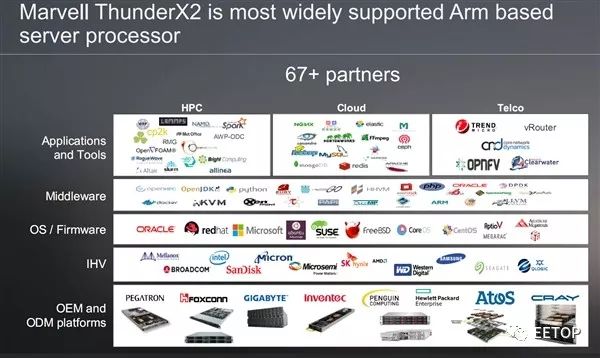
In terms of ecosystem, Marvell’s ARM server platform has also received support from many OEM manufacturers and platforms, IHV hardware manufacturers, operating systems and firmware, middleware, applications, and tools.
During an interview at the Taipei Computer Show, Gopal Hegde, Marvell’s Vice President and General Manager of the Server Processor Division, stated that ARM servers have unique advantages in the cloud, as they can leverage the existing massive Android mobile ecosystem to smoothly achieve ARM cloud computing and rendering based on platform and architecture consistency. As the software and hardware ecosystem improves, the transition of enterprise data from x86 servers to ARM servers is becoming increasingly smooth, and Marvell will provide wholehearted assistance.
Furthermore, Marvell plans to launch a new ARM server platform every two years, each time achieving a performance improvement of 2x or more.
He also revealed that ARM predicted two years ago that in the next five years, 20% of servers worldwide would be based on ARM architecture, and the proportion in the Chinese market may be even higher, as China is willing to try new things.
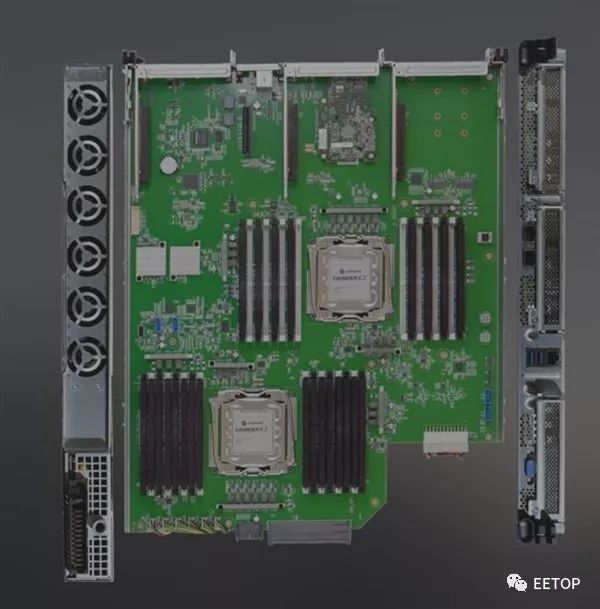
*Disclaimer: This article is original by the author. The content of the article is the author’s personal opinion, and the purpose of reprinting is to convey more information, which does not represent EETOP’s endorsement of its views or its authenticity. If there are issues related to the content, copyright, and other matters, please contact us in a timely manner, and we will delete it as soon as possible!

Click to read the original text to see which public accounts are related to the semiconductor industry?